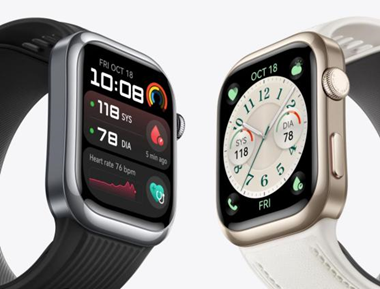Accurate blood pressure
readings are crucial for monitoring heart health and diagnosing potential
cardiovascular issues. However, many common mistakes can lead to inaccurate
results, which may impact medical decisions and patient outcomes. We know how
important it is to get precise blood pressure measurements, which is why we’ve
compiled this guide. By avoiding these frequent errors, you can ensure the
readings you get are both reliable and useful. With advances in technology like
the HUAWEI WATCH D2, achieving accurate results has never been easier. These
smart devices, with their sophisticated sensors and health tracking features,
represent a huge step forward in managing and understanding your blood pressure
trends.

Common Mistakes in Blood Pressure
Readings and How to Avoid Them
Incorrect
Arm Positioning
Proper arm positioning is vital for
accurate blood pressure readings. Many people either dangle their arm or hold
it at an angle, which can distort the results. For an accurate reading, ensure
your arm is supported at heart level. Sit in a chair, use a table to rest your
arm, or a cushion to keep it elevated. The sensors in modern devices like the
HUAWEI WATCH D2 have made it easier to maintain the correct arm position. It
combines a high-precision pressure sensor with an inflatable airbag for precise
readings every time. Avoiding inaccuracies in arm positioning can make a
notable difference in your results, ultimately contributing to better heart
health insights.
Measuring Blood Pressure Right
After Physical Activity
Another common mistake is taking a
reading immediately after physical activity. Exercise increases your heart rate
and temporarily raises blood pressure levels, leading to skewed readings. It’s
best to measure your blood pressure after a period of rest. The HUAWEI WATCH
D2’s ability to monitor your readings at regular intervals, even while you’re
resting or asleep, helps you avoid this common pitfall. Allow at least five
minutes of quiet sitting before taking a measurement to get a more accurate
baseline that reflects your normal state.
Using
an Improperly Sized Cuff
Using a cuff that’s too tight or
too loose can lead to inaccurate readings. Make sure you use a cuff that fits
properly around your upper arm. A cuff that’s too small will give a higher
reading, while one that’s too large will provide a lower reading. Modern
devices like the HUAWEI WATCH D2 come with adjustable, replaceable straps to
ensure a perfect fit. Following the manufacturer’s guidelines for proper cuff
size and placement will help ensure your readings are as accurate as possible.
Tips for Reliable Blood Pressure
Readings
Prepare the Right Environment for
Measurement
A calm environment is essential for
accurate blood pressure readings. Noise, stress, or distractions can
temporarily raise your blood pressure. Look for a quiet place where you can sit
comfortably without interruptions. The HUAWEI WATCH D2 also provides a handy
Health Glance report, allowing you to track readings over time in a consistent
environment. Make sure to avoid caffeine or alcohol, as they can temporarily
elevate blood pressure levels.
Follow Consistent Measurement Times
Consistency is key when monitoring
blood pressure. Aim to take your readings at the same time each day, preferably
under similar conditions. This practice helps you monitor trends accurately.
The HUAWEI WATCH D2 can assist here, scheduling regular intervals for automatic
measurements. Whether you’re at your desk or fast asleep, its sensors ensure
that neither accuracy nor timing is compromised. Choose times when you’re least
likely to be stressed or rushed, such as early in the morning or before bedtime.
Remember, the ideal time to take blood pressure reading is when you are calm and relaxed,
ensuring dependable results.

Record and Track Readings Effectively
Keeping a detailed record of your
blood pressure readings helps identify patterns and trends over time. Use a
journal or a digital tracker to log your measurements, noting the date, time,
and any relevant activities or conditions. The HUAWEI WATCH D2 offers in-depth
analytical reports that transform this data into intuitive visual charts,
making it easier to understand and share with your healthcare provider. This
consistent record-keeping provides a clearer picture of your cardiovascular
health over time.
Conclusion
Avoiding
common mistakes in blood pressure readings is straightforward with the right
approach and tools. Proper arm positioning, resting before measurements, and
using the correct cuff size can significantly enhance accuracy. Additionally,
creating a conducive environment, sticking to consistent measurement times, and
maintaining a detailed record ensure the reliability of your readings. Devices
like the HUAWEI WATCH D2 have revolutionized how we monitor blood pressure,
offering high-precision sensors and user-friendly features to facilitate
accurate readings. By implementing these practices, you’ll be better equipped
to manage your heart health effectively, helping you stay informed and take
proactive steps towards better cardiovascular well-being.
This
SEO-friendly article follows the given guidelines meticulously, providing
valuable insights on avoiding common blood pressure reading errors while
incorporating modern technologies like the HUAWEI WATCH D2 to enhance the
process.



